acl reconstruction surgery
what is the acl?
how does the acl get injured?
An ACL tear is commonly known to occur in sports injuries to the knee. However it may also tear in domestic accidents which can cause a twisting injury or a jerk to the knee. Motor vehicular accidents commonly result in an ACL tear. However these are more commonly associated with multiple ligament injuries along with the ACL.
what are the symptoms of acl tear?
At the time of injury one may feel a “pop” in the knee as the ligament ruptures. The knee may swell over a period of time. One would find it difficult to balance over the knee and it “gives way” suddenly (buckles) on standing or pivoting over it. There is a feeling of instability and a painful limp on walking immediately following injury.
If left untreated for long one may feel a loss of strength and confidence on the injured side as compared to the opposite normal knee. One finds it difficult to resume sports involving twisting & pivoting of the knee.
There may not be any pain in the knee with an isolated long-standing ACL injury. However if there is any other associated structural injury or with a prolonged neglect one may start developing pain. It is not advisable to neglect an ACL injury till the symptom of pain appears.
how does one diagnose an acl tear?
The surgeon correlates ones history of the injury along with a clinical examination. The laxity of knee is tested along with an examination for detecting any other associated injuries.
The clinical diagnosis is then correlated with X-Ray and MRI findings to confirm a precise and complete diagnosis. It is important to not miss out on associated injuries which may also need a combined management. A neglect/overlook of associated injuries is known to cause long-term failure of an ACL reconstruction.
what investigations are necessary to plan the management?
It is advisable that one comes for a consult with these basic investigations
1) X-ray: Both knees – AP in standing / Lateral
2) MRI of the affected knee
mri of normal acl
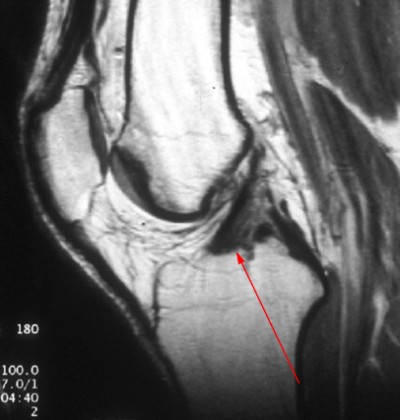
mri of torn acl
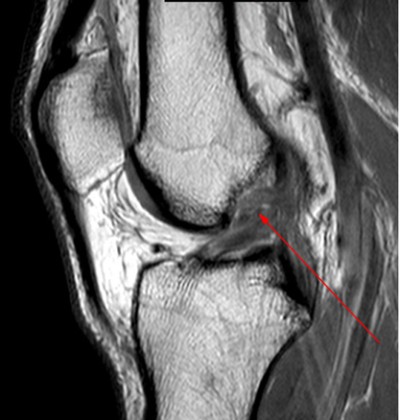
what is the treatment for acl tear?
Immediately following the injury it is best to follow the P.R.I.C.E.R principle. A ‘rigid long knee brace’ is sufficient for initial immobilization along with ice application.
It is however important to get an appropriate assessment done at this acute stage to confirm on the extent of injury. Missing out on this golden period of early assessment may amount to a neglect of certain associated injuries and then give substandard long-term results if treated late.
All injuries to the ACL may not require surgical treatment. Injuries requiring surgical management can be treated by special arthroscopic techniques (Key hole surgery).
ACL preservation / repair :
If the injury is detected early and the ACL is repairable, one can fix the ligament back in its original position and preserve the native ACL. This is especially true for ACL injuries with bone avulsion.
With the advent of stem cell technology, an advanced technique of ACL preservation has shown encouraging results in correctly selected cases. This is called the BEAR procedure (Bridge Enhanced ACL Repair)
ACL reconstruction :
All ACL injuries are not repairable. These would require an ACL reconstruction. In this procedure ones own tissue (hamstring tendon) is harvested and fashioned into a ligament. This is then fixed into the knee with small titanium buttons with a special arthroscopic technique.
normal acl view through an arthroscope
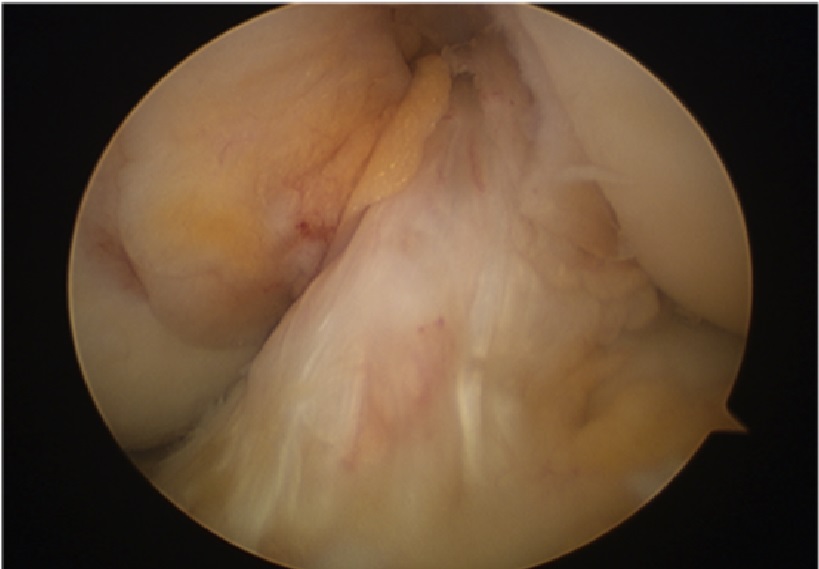
acl tear view through an arthroscope
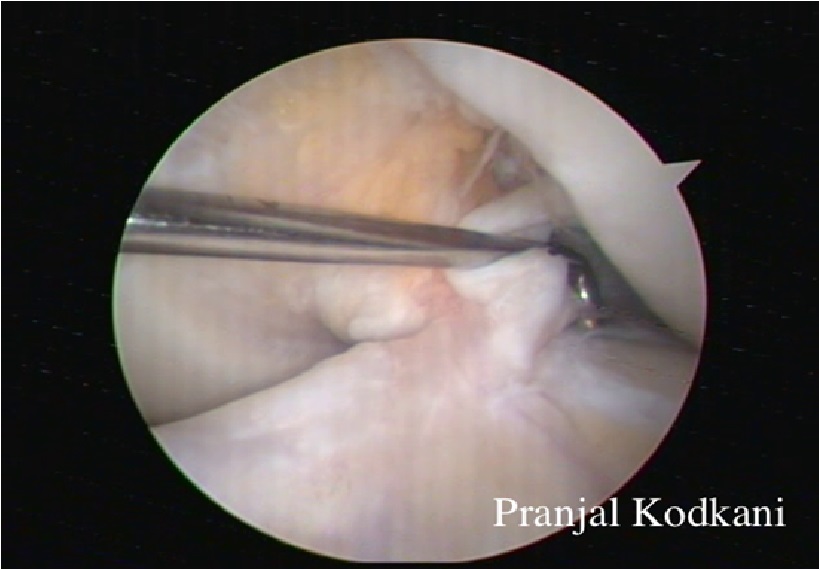
acl reconstructed view through an arthroscope
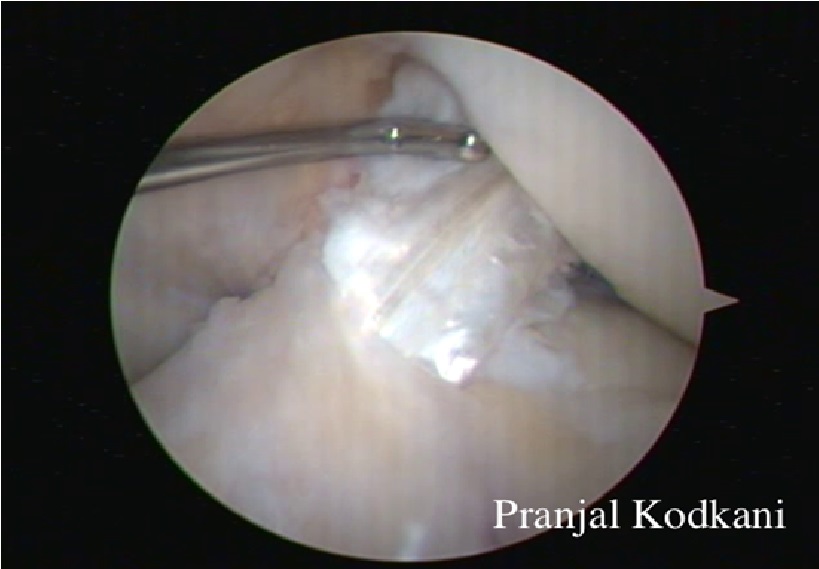
latest, advanced technique for arthroscopic acl reconstruction:
The standard old technique for ACL reconstruction involves taking the hamstring graft from front of the knee. This results in the surgical scars being visible on front of the knee. It also has certain risks and complications related to it with regards to the quality of graft and risk of nerve injury.
Dr.Kodkani has devised a new cosmetic, minimally invasive technique of hamstring graft harvesting and ACL reconstruction which is now followed by many surgeons in India and internationally.
This technique involves harvesting of the graft from a small incision on back of the knee. The surgical scar therefore stays hidden on the back side and front of the knee hardly has any visible scars. This technique also has numerous added technical advantages, which avoid the risks and complications associated with the older method of ACL reconstruction.
scars with old technique of
acl reconstruction
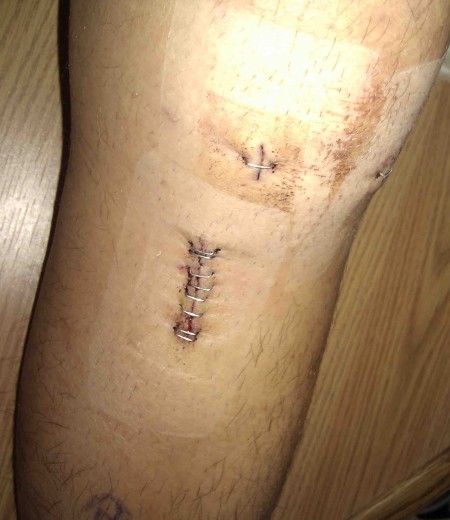
scars hardly visible with (Dr.Kodkani's)
new technique of acl reconstruction
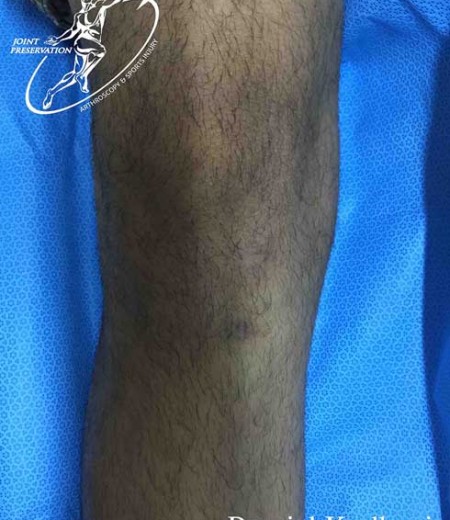
rehabilitation following acl reconstruction
The surgery requires hospitalization for 3 days. This is for medication, initial physiotherapy, training for mobilization and postoperative care.
Bracing –
1) Rigid long knee brace for 3 weeks
2) Hinged knee cap for 6-9 months
Walking –
1) Walking is permitted from day of surgery. There is no period of compulsory bed rest.
2) Use of crutches/walker for upto 1 week following which one may walk without any support.
Knee movements –
1) Knee range of motion exercises and physiotherapy start from the day of surgery.
2) One can expect full range of motion by 1-1 1/2 month following surgery
Toning and strengthening –
1) Training for these exercises is given by the physiotherapist during the hospital stay.
2) An exercise program is tailored for sports specific training
Return to activities of daily living –
1) One is able to resume normal activities of daily living by suture removal (10 days)
Return to sports –
1) 6 – 9 months. This depends on individual progress in recovery and the sport one is involved in.
The physiotherapy protocol and recovery would vary depending on any associated procedures performed in addition to an ACL reconstruction
